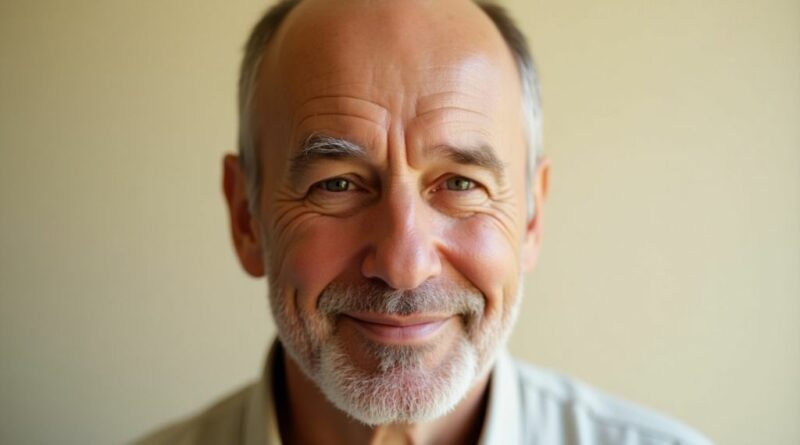UCLA’s Breakthrough in Battling Baldness
For centuries, certain dreams have proven consistently evasive for us as a species. Most persistent among these have been untold riches, eternal youth, and……perhaps the most intimate of all – the search for a cure for baldness. From the bizarre concoctions of Ancient Egypt’s hair loss remedies, blending dates with donkey hooves, to the Native American reliance on yucca juice, the battle against thinning locks has been as creative as it has been desperate. Today, however, that age-old struggle may finally be nearing a turning point, thanks to a groundbreaking discovery from UCLA’s genetic scientists. Enter PP405, a molecule that promises to reawaken hibernating follicles and potentially transform the landscape of hair regrowth.
Hair loss is no trivial matter. Triggered by a cocktail of culprits—ageing, stress, hormonal shifts, and, of course, those pesky genetics—it affects over half of men and a quarter of women by the time they hit 50. For many, it’s more than just a cosmetic concern; it’s a psychological burden, a dent in confidence that no amount of hats can fully conceal. Traditional remedies like Rogaine and Propecia—detailed in this guide to hair loss treatments—have offered some relief, but their patchy success rates—working for just one in three users—have left millions yearning for a more universal solution. Could PP405, uncovered by UCLA’s brightest minds, be the answer we’ve all been waiting for?
The Science Behind the Strands
At its core, PP405 is a small but mighty molecule, designed to shake dormant follicle stem cells out of their slumber. These cells, nestled in the scalp, often lie inactive due to a protein that keeps them in a state of perpetual rest. The UCLA team—led by Professors William Lowry, Heather Christofk, and Michael Jung—found that PP405 can inhibit this protein, jolting the stem cells into action and sparking the growth of new hair. Unlike the wispy “peach fuzz” conjured by many over-hyped lotions, this treatment aims to deliver thick, terminal hair—the kind that could make even the most resigned comb-over enthusiast reconsider their options. Curious about the science? Dive into how follicle stem cells work.
The journey to this discovery has been a long one, spanning nearly a decade of meticulous lab work. Early human trials, launched in 2023, saw participants in Orange County rubbing PP405 onto their scalps each night for a week. The results? “Statistically significant,” according to the cautiously optimistic researchers. While they’re keeping the hard data close to their chests for now, the team’s excitement is palpable. Lowry, a richly haired professor who jokes about his own genetic fate, believes this could be a game-changer for those reeling from pattern baldness, chemotherapy-induced loss, or other hair-thinning woes.
A Crowning Achievement in the Making
The trio behind PP405 aren’t just resting on their laurels. Through UCLA’s Technology Transfer Group, they’ve co-founded Pelage Pharmaceuticals, a company tasked with turning this scientific gem into a market-ready marvel. With $16.4 million in backing from heavyweights like Google Ventures, the firm is gearing up for larger trials and the rigorous process of securing FDA approval. “It’s a waiting game,” Lowry admits, “but one worth playing.” Learn more about Pelage Pharmaceuticals’ mission and how it’s pushing the boundaries of hair restoration.
Of course, no miracle cure is without its caveats. Lowry is quick to temper expectations: “No product will work for everyone.” Yet the early signs are promising, and the potential applications stretch far beyond vanity. For cancer survivors rebuilding their lives post-chemo, or individuals grappling with alopecia, PP405 could restore more than just hair—it could reclaim a sense of self.
Looking Ahead: A Follicle-Filled Future?
As Pelage Pharmaceuticals presses forward, the world watches with bated breath. Will this be the breakthrough that finally consigns baldness to the history books, alongside leeches and bloodletting? Or will it join the long list of almost-rans in the hairy annals of science? For now, the optimism is infectious. Imagine a future where thinning hair is a choice, not a fate—where the mirror reflects a fuller, more confident you. Explore the future of hair regrowth technology to see where this journey might lead.
So, whether you’re a follicly challenged soul or simply curious about the next big thing in hair regrowth science, keep an eye on UCLA’s PP405. It might just be the crowning glory we’ve all been dreaming of. After all, in a world of endless quests, who wouldn’t want to win the battle for a better barnet?
We’d love your comments on today’s topic!
For more stories like this one, click here.
Thought for the day:
“Only in the darkness can you see the stars.” — Martin Luther King, Jr.



